Different cooks want different styles of cookware. Some people swear by cast iron while others want something a bit lighter, such as anodized aluminum or non-stick, Teflon-coated cookware. Here are some factors to consider when choosing between anodized and Teflon cookware.
What is Teflon?
Teflon is the brand name for a polytetrafluoroethlyene fluoropolymer used to coat some non-stick pans. It is manufactured by Dupont.
What is Anodized Aluminum?
Anodization occurs when a metal, such as aluminum, is placed in a bath containing electrolytes, and an electrical current is run through the bath. A thick, protective layer forms on top of the aluminum, making it resistant to corrosion and rust.
Advantages of Teflon and Anodized Aluminum
Both anodized cookware and Telfon-coated cookware allow cooks to use less fat, when cooking, as they are non-stick. They both cost less than other types of cookware, such as stainless steel and enameled cast iron.
Safety Concerns with Teflon
In 2006, many people discarded their Teflon-coated pans due to concerns that the coating released dangerous fumes when heated beyond 680 degrees Fahrenheit. However, if a cook is careful, their cookware will never reach that high a temperature.
Care of Teflon-coated Cookware
Never use metal utensils in Teflon-coated cookware as they scratch the coating off. Only use the cookware over low or medium heat. Wash the pan in soapy water using a sponge or dishrag.
Care of Anodized Cookware
Anodized aluminum is scratch-resistant, so blunt metal utensils may be used on it. Anodized cookware retains heat well, so only low or medium heat is needed. Wash in soapy water.
Related Articles

Cooking With Stoneware

How to Use Smartware Cookware

What Is Better for Cookware: Glass, ...

What Is Magnalite?

What Is the Best Cookware for Electric ...
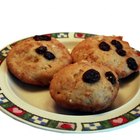
Roshco Silicone Bakeware Instructions

Are Teflon-Coated Pans Oven-Safe?

What Kind of Pan Can I Use to Cook a ...

Are Nickel Lined Pans Safe?

Why Does Food Stick to a Non Stick Pan?
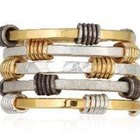
How to Clean Vermeil

What Are the Dangers of Titanium in ...
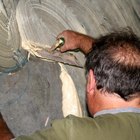
How to Remove Loctite From Clothes

Healthy Non-Stick Cookware

DIY: Anti-Glare Coating
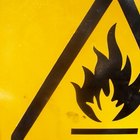
Safety Hazards of Acetone
Dutch Oven Vs. Cooking Pot

How to Clean an Oven Liner

What Are the Types of Fine China?
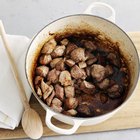
Can Ceramic Cookware Be Used on ...
References
Writer Bio
Based in Pennsylvania, Emily Weller has been writing professionally since 2007, when she began writing theater reviews Off-Off Broadway productions. Since then, she has written for TheNest, ModernMom and Rhode Island Home and Design magazine, among others. Weller attended CUNY/Brooklyn college and Temple University.